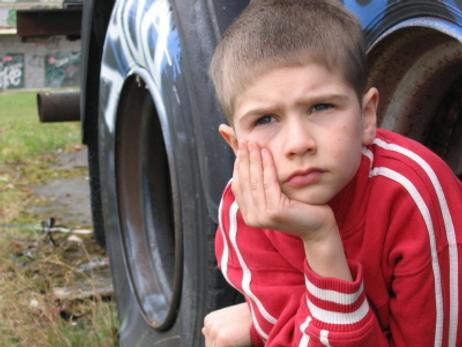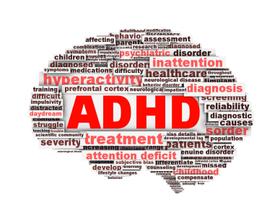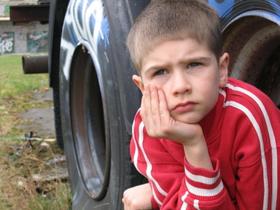It wasn’t news to many of the educators across the country, but the poverty numbers recently released are still alarming. With an economic slowdown well into its third year and unemployment figures still reaching double digits in some areas, poverty rates are up as well. According to recent data released from the U.S. Census Bureau, the rate of poverty across the United States has gone up 1.6 percent, although some individual states are seeing even larger increases. This translates to more than one million children nationwide who have now been added to the poverty rolls.
Poverty Widespread Across the Country
The U.S. Census Bureau report shows that statistically significant increases in poverty were seen in about 20 percent of the country. As many as 653 counties experienced poverty increases among children between 2007 and 2010, and only eight counties nationwide reported a poverty decrease. The data provided represents single-year figures of 2007 and 2010 to study the change in poverty levels since the recession began. The numbers provided by the U.S. Census Bureau help to determine the distribution of federal and state funding to local communities.
Nationally, nearly 20 percent of children qualify as poor, according to a report in the . In addition, one-third of the total counties in the country have thresholds well above that level, while one-quarter boasts numbers below the national average. Some of the states that showed the highest increases over four years were New Jersey, Nevada, Florida, and Tennessee. Counties with some of the highest poverty rates overall include three counties in Texas, and one in New York, Missouri, and Georgia. This data paints an accurate picture of precisely how widespread the poverty problem currently is for the United States.
This PBS News item reports on poverty in public schools.
Poverty Hits State of Georgia Hard
Georgia is one of the states hardest hit by the rise in poverty. According to a report on the , one in four Georgia kids were living at or below the poverty level in 2010. The federal government currently places the poverty threshold at an annual income of $22,050 for a family of four. Median household income in the state also declined, from $49,136 in 2007, to $46,430 in 2010. For 2015-19 the Census reports that median household income had risen to $58,700.
“Half of all the children in Dougherty County life in poverty,” Julie Sharpe, Georgia’s KIDS COUNT data manager, stated at the GFCP website. “Forty percent of the children in Bibb, Clarke and Richmond Counties lived in poverty last year, and one-third of the children living in Glynn County live in poverty. That’s an increase of nearly 17 percent. The Atlanta metro counties all saw increases in the number of poor children as well. Fulton, DeKalb, Cobb and Gwinnet all now have over a 20-percent child poverty rate.”
Dade County was another Georgia county that saw a big jump in poverty numbers, according to the Huffington Post. The superintendent of Dade County Schools, Shawn Tobin, said the numbers weren’t much of a surprise to those who deal with the reality of poverty in the district every single day. Tobin said that more students in Dade County are now qualifying for free breakfasts and lunches through the district, and attendance is now up as students flock to school to get their two guaranteed meals every day.
“It hits rural areas hard,” Tobin told the Post. “We’re using all available resources. Sometimes they’re for basic needs.”
Tennessee Grappling with Rising Poverty Numbers
Tennessee is another state that continues to struggle in the current recession. According to a , an additional 27,215 children are living in poverty, which translates into one in every four Tennessee children living in poverty overall. Some counties have even higher poverty rates; for example, two-thirds of the children in Jackson-Madison County come from low income families. Julie Harrison, a supervisor of federal programs for Wilson County schools, told that an estimated 300 families are homeless in her district.
“You don’t realize what a huge need there is. You can’t sit down and learn if you’re hungry,” Harrison told Knox News.
Higher poverty levels mean that schools are spending a larger percentage of their tight budgets meeting the basic needs of the students, rather than on education resources. At Maplewood High School in Nashville, Joy Pillow-Jones, student resource center director, felt the need to provide a Thanksgiving meal to students, in addition to the free breakfasts and lunches already offered.
“High school is difficult anyway, without having to worry about how you’re going to eat or where you’re going to sleep tonight,” Pillow-Jones told the Jackson Sun.
This video illustrates one teacher's awareness of how poverty affects teaching.
The Effects of Poverty on Education
While there is no shame in being poor, the effects of the rising poverty numbers can be far-reaching on the education front. Studies have shown that children living below the poverty level may have more behavior problems in school and most complete fewer years of school overall. Those students are more likely to grow up and face more years of unemployment than their wealthier counterparts.
Technology is also an area where impoverished students tend to fall behind. While many youngsters in this country take the Internet and other forms of technology for granted, those coming from low-income homes may have little exposure to technology outside of the classroom or the public library. When those students become adults, they will be unable to complete in a technical world. Let's hope that a rising economic tide is on the horizon for America's students.
Questions? Contact us on Facebook @publicschoolreview.















